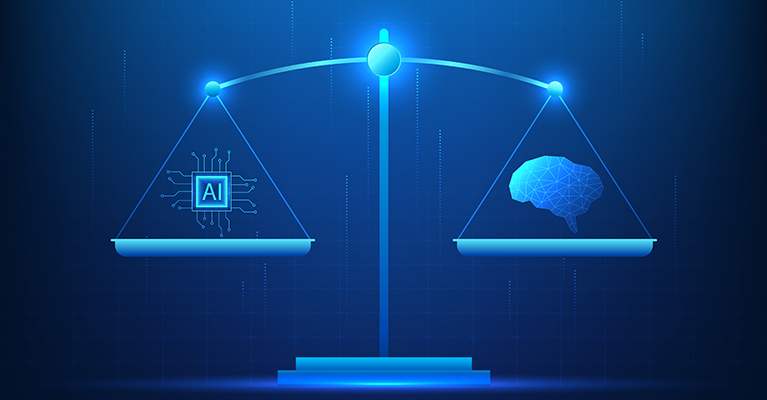Latest Blogs
Lexis+ AI™︎ VS ChatGPT: A Legal Perspective
Summary: Primary and Secondary Law Security, Privacy, and Trust Access to Authoritative Content Evidence Supported by Canadian Case Law Navigate Unfamiliar Issues Take Legal Action Quantum...
LexisNexis®︎ Canada Leads the Way in Development of Legal AI...
C anadian legal professionals have been on the leading edge of adopting generative artificial intelligence (Gen AI) technology. A LexisNexis® Canada Inc. survey found that 93% of Canadian lawyers are aware...
9 Reasons Why Canadian Law Firms Should Embrace Legal AI in ...
Canadian businesses and professionals have been eager to explore the possibilities of generative artificial intelligence (Gen AI) technology, but adoption rates need to accelerate in 2025 for Canada to...
Grades are in: Canadian law students give positive reviews on...
All Canadian law students received access to Lexis+ AI on January 7, 2025. Since then, they have initiated over 18,000 Lexis+ AI sessions and usage has increased steadily week to week. Here is what Canadian...
Responsible AI Innovation: The LexisNexis Commitment to a Principled...
The emergence of generative AI (Gen AI) tools represents an exciting breakthrough for the legal industry . However , i t’s crucial to approach this new technology with appropriate caution . Just as lawyers...

Generative artificial intelligence (AI) represents the most monumental tech breakthrough in the past decade, promising immense productivity gains, economic increases, and a transformation of work. Law firms and legal professionals are increasingly adopting technology to solve problems and expedite workflows.
Leading generative AI solutions for the legal industry such as Lexis+ AI™ deliver conversational search, intelligent legal drafting, insightful summarization, and document upload functionality. The optimal AI systems are built with human supervision, ethical mindfulness, and consideration of real-life implications to produce reliable, secure, precise outputs. Most importantly, premier generative AI systems can comprehend and address or eliminate the emergence and propagation of biases.
What is AI Bias?
AI bias refers to the systematic errors or unfair outcomes that can arise in artificial intelligence systems due to factors like biased training data, algorithmic flaws, or human biases in the development process. It can manifest as discrimination against certain groups, perpetuating societal stereotypes, or leading to unfair treatment.
AI Bias Examples
- Predictive policing algorithms perpetuating biases by disproportionately deploying law enforcement resources in minority neighborhoods.
- Loan approval algorithms denying loans to individuals from certain neighborhoods or income levels, leading to discriminatory lending practices.
Origins of Bias in AI
Large language models (LLMs) identify correlations in fed information and generate outputs potentially biased against certain demographics, protected groups, or individuals. The common phrase, “Garbage in, garbage out,” holds true for LLMs.
This issue compounds over time, as biased AI output consumed or published by people propagates prejudices back into the system. According to generative AI experts, 90% of online material may come from AI soon, this self-reinforcing loop poses serious concerns.
Mitigating Bias in AI
Eliminating bias requires a multifaceted approach with collective responsibility among developers, users, and consumers across the AI lifecycle.
AI Developers’ Role in Bias Prevention
Generative AI providers can help avert bias emergence or propagation by instituting bias-minimizing practices during deployment, auditing processes, assessing outputs, soliciting input, and utilizing automated bias detection technologies.
AI providers should enable transparency, beginning by curating inputs to prevent introduced bias to avert ingrained biases or other fallacious or stale outputs.
Integrating fairness-conscious algorithms can aid bias prevention by expressly accounting for and reducing prejudices throughout model training, applying methods like adversarial learning and sample re-weighting.
Additionally, incorporating user feedback offers real-time understanding. As the Harvard Business Review proposed, AI systems could administer “blind taste tests” to disrupt the self-reinforcing prejudice prevalent in many models.
Law firms’ Role in Preventing AI Bias
Law firms must select appropriate AI to reduce bias risks. They can prioritize platforms exhibiting accountable generative AI use, transparency around inputs, and emphasis on human oversight.
Firms should opt for platforms dedicated to tackling the creation and reinforcement of bias, since opaque systems lacking this commitment presents higher risks.
Law firms can institute AI policies guiding proper usage, with implementation varying by organization. While approaches differ, all policies should cover lawyers’ application of specific systems, particularly prevalent ones.
The Role of Lawyers in Preventing AI Bias
By automating tasks, generative AI allows lawyers to strategize, attract business, provide economic guidance, and prioritize client-facing value. To capitalize on AI’s potential, legal professionals must utilize it conscientiously, with ongoing efforts to avert biases. All in all, lawyers should take targeted measures to prevent bias, such as applying the generative AI maxim: ensure substantive human oversight to every element of the legal task at hand.
Looking for tips on how to choose the right AI tool for your firm or company? Check out this free buyer’s guide.